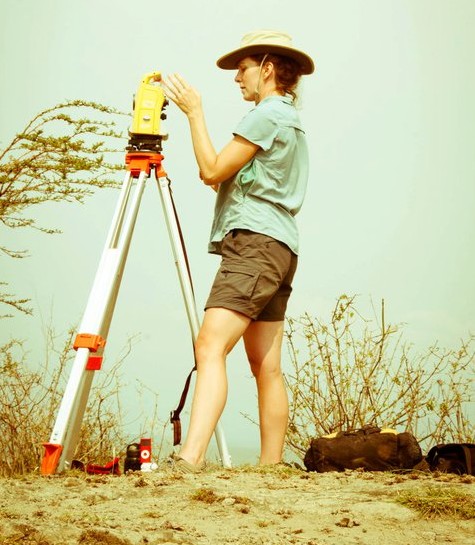
PhD and MA from Penn State; BA from University of Florida
Field Site: Rusinga Island, Kenya
Photo credit: W.E.H. Harcourt-Smith
If it were up to me, NPR would have Dr. Holly Dunsworth on speed-dial to comment about all exciting new discoveries in the world of paleontology, like they do Neil deGrasse Tyson for every eclipse, supermoon, or similarly stimulating astronomical phenomenon. Heck, while I’m ruling the world, I’d make FOX give her a biologically oriented popular science show that airs Sunday evening before the more physically oriented Cosmos. Because Holly is the antithesis of an “ivory tower” academic. She is incredibly funny, articulate, and intelligent, all of which make her one of the great scientific communicators – if you need independent confirmation, check out her essay for NPR’s “this i believe series” (http://www.npr.org/templates/story/story.php?storyId=90311455).
Holly is a biological anthropologist whose research focuses on how humans came to be humans. She uses a combination of paleontology, genetics, and studies of live apes to answer questions like: When did our ancestors lose their tails? Why are human babies so helpless for so long? Why don’t we have hips that make it easier to give birth? When did we learn how to throw a curve ball?
Holly’s main field site is Rusinga Island, Kenya, where volcanic deposits preserve an ecosystem 18 – 20 million years old. Nearly all parts of the ecosystem are preserved, including fossil tree stumps in life position, leaves, grasshoppers and other insects, and all sorts of vertebrates, including an unassuming mammal called Proconsul. Proconsul is one of your earliest hominoid ancestors, found near the beginning of the ape radiation. Holly has studied Proconsul anatomy, particularly its feet, and used its bone structure to make inferences about behavior. Now, she and her collaborators spend their summers looking for new fossils on Rusinga Island so that they can more completely reconstruct the paleoenvironment in which Proconsul lived and better understand how evolution occurred in our hominoid ancestors. To learn more about this work, and especially to see pictures of Proconsul and Rusinga, check out Holly’s blog on “The Ape in the Trees” at http://ecodevoevo.blogspot.com/2014/02/the-ape-in-trees.html.
For more information on Dr. Holly Dunsworth, please visit: http://www.uri.edu/artsci/soc/dunsworth.html
You can see what a wonderful science writer she is by checking out her contributions to the evolutionary biology blog, The Mermaid’s Tale: http://ecodevoevo.blogspot.com/2012/05/braindrops-on-noses.html
And, you can even watch her lecture for the Leakey Foundation and the California Academy of Sciences. (I stole the title of this post from the title of her lecture.) Never have so many rock ‘n roll album covers appeared in a scientific talk! http://fora.tv/2012/11/29/Your_Genome_is_Showing_Human_Origins_Gets_Personal
Ellen, I loved this post, but I have to add, one of the most bad-ass parts of Holly is that she is the only female PI or senior scientist working out on Rusinga. For all the female grad students working out on the island (curiously enough there are no male graduate students currently working on Rusinga) she has been a great friend and role model.
Awesome!